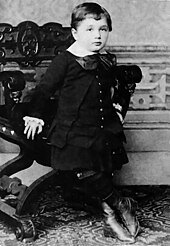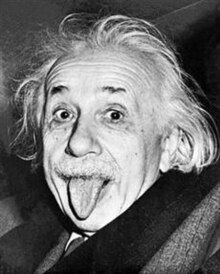Marie Sklodowska Curie, also known as Marie Curie, was a polish chemist and physicist who worked mainly in France. Curie is famous for her studies on radioactivity. She was the first woman to win a Nobel Prize, and the only woman to win in 2 fields. She was also the first female professor at University of Paris(La Sorbonne).
She was born Maria Salomea Slodowska is Warsaw, which was back then the Kingdom of Poland. She studied at Warsaw's Floating University and began her training to be a scientist. In 1891, age 24, she followed her older sister, Bronislawa, to study in Paris.
She earned higher degrees, and conducted her subsequent scientific experiments. Later, she won the Nobel Prize in Chemistry. She shared her
Nobel Prize with her delightful husband,Pierre Curie and a physicist, Henri Becquerel. Marie Curie was the sole winner of the 1911 Nobel Prize in Chemistry.
Her achievements include her theory of radioactivity, isolating radioactive isotopes, and
her discovery of 2 elements, polonium and radium.
Marie and Pierre loved to work together. "One of our joys was to go into the work room at night... The glowing tubes looked like faint, fairy lights.", Marie said a few months before she died.
<--- At right, a dish containing 2.7 g. of radium bromide (with the card above it) was photographed by the light it emitted.
The Curies published all of the processes they used to isolate radium, without patenting any of them. Like many of their colleagues in Paris, the Curies believe they must spend as little energy on personal matters, and devoting their time and life to as much scientific research as possible.In any case, they had no belief that radium would be a big money-maker.
Below, "The Race for Radium" Below, "Radium Salts/
fascinated the public. In cheap Polonium-Actinium and sci-fi novels and and sober other radioactive
newspaper articles, it was touted substances.
 as a magical substance, who's rays
could cure all illnesses, power
wondrous machines, or destroy a
whole city in one blow.
as a magical substance, who's rays
could cure all illnesses, power
wondrous machines, or destroy a
whole city in one blow.

In early June of 1903, both Curies were invited to London as guests of the prestigious Royal Institution. The audience included some representatives of England's social elite and such major scientists such as Lord Kelvin. Lord Kelvin showed his respect by sitting next to Marie during the lecture and by hosting a luncheon in Pierre's honor the following day.
 But all was not well that weekend. Pierre was so ill, he had trouble dressing himself before the talk. In fact, his fingers were so covered with sores that he spilled some radium in the hall while demonstrating its fascinating properties. Ill health never kept either Curie from noting the value of the jewels worn by the England high society that weekend. They would sometimes amuse themselves by talking about how fine a laboratory they could buy with the money if they were to sell those precious jewels.
But all was not well that weekend. Pierre was so ill, he had trouble dressing himself before the talk. In fact, his fingers were so covered with sores that he spilled some radium in the hall while demonstrating its fascinating properties. Ill health never kept either Curie from noting the value of the jewels worn by the England high society that weekend. They would sometimes amuse themselves by talking about how fine a laboratory they could buy with the money if they were to sell those precious jewels.
Visitors from abroad also honored the Curies on their formal thesis defense in 1903. Marie's sister Bronya made the difficult trip from Poland to celebrate her sister's triumph.
Life was beautiful to Marie and Pierre the spring of 1906. During their Easter recently, they had watched 8-year old Irene net butterflies and 14-month old Eve learn to walk. Although, Pierre had been getting a little too involved in his work again..
Pierre's schedule for Thursday, April 19, 1906, was fully professional and social. After a luncheon of the Association of Professors of the Science Facilities, he was scheduled to go over proofs and visit a nearby library. He was looking forward to his meeting with fellow scientists that evening in the Curie home.
Pierre Curie was not fated to complete that days schedule.. After working in the laboratory all that morning, he left for the luncheon with an umbrella in his hand because it was raining quite hard. There he spoke forcefully on a number of issues that concerned him, including widening career options for junior faculty and drafting legal codes that helped prevent laboratory incidents.
When the meeting was over, he rushed to his publisher only to find the doors locked due to a strike. Unfortunately, hurrying to cross the street, Pierre was hit by a horse drawn carriage and was instantly killed. The carriage had a load of military uniforms, and weighed at least 6 tons.
 When Pierre's father learned
When Pierre's father learned
that his son had died, he said,
"What was he dreaming about this
time?" (Painting by Childe
Hassam, 1983)
"He wasn't careful enough when he was walking in the street, or when he rode his bike. He was thinking of other things.", Pierre Clerc, the Sorbonne lab
assistant who identified Pierre's body.
Marie did not learn the news would change her entire life until that evening. In complete shock, she began preparing the necessary arrangements. Marie sent Irene next door to spend a few days with the neighbors, telegrammed the news to her family in Poland, and asked for the body to be sent to the house. Pierre's older brother, Jacques, arrived the next day from Montpellier. The news of Pierre's death was in Newspapers around the world, and Marie was overwhelmed with letters and telegrams.
"Crushed by the blow, I do not
feel able to face the future.
I could not forget, however,
what my husband used to say,
the even deprived of him, I
ought to continue my work.
-Marie Curie, Lover of Pierre
Marie continued her work, and soon went to America with Irene so she could have a bigger laboratory. Years later, Marie was offered a tour of the Whitehouse. She accepted the offer, and admired the Whitehouse while wearing the same black dress she wore to both Nobel Prize ceremonies.
In 1926, Irene was married. Irene and her husband, Frederic, were amazed with science, and Marie taught them everything about chemistry and science. Irene and Frederic carried on being scientists, and soon won the Nobel Prize for chemistry in 1935 because they had discovered artificial radioactivity. Unfortunately, Marie was not able to attend the Nobel Prize ceremony, for she had died a year earlier. Soon, Irene and Frederic Joliot-Curie were world famous scientists with their 2 children Helen and Pierre. It was even Frederic's idea to name one of their children Pierre.
The End
 In his early years, Einstein's mother was disturbed by how long it took him to learn how to talk and communicate with others. At right, there is a picture of him at only age 3. He was very shy as a child, and his elementary teachers thought of him as a foolish dreamer. One teacher even asked him to drop out of his class! Young Einstein hated sports, they made him dizzy and tired. But what he lacked in sports he made up for in music. He could play Mozart sonatas on his violin, while usually accompanied by his loving mother. But he mainly like private games, such as building a house of cards.
In his early years, Einstein's mother was disturbed by how long it took him to learn how to talk and communicate with others. At right, there is a picture of him at only age 3. He was very shy as a child, and his elementary teachers thought of him as a foolish dreamer. One teacher even asked him to drop out of his class! Young Einstein hated sports, they made him dizzy and tired. But what he lacked in sports he made up for in music. He could play Mozart sonatas on his violin, while usually accompanied by his loving mother. But he mainly like private games, such as building a house of cards.  On Albert Einstein's 72nd birthday, photographer Arthur Sasse had been taking pictures of Albert most of the day. But for one of the last pictures, because he was so tired of people taking pictures of him all day, instead of smiling, he stuck out his tongue just to be silly. Albert liked that photo so much, he had the photographer make 9 copies of it for Albert's personal use. Weeks later, Albert signed one of the photos and gave it to some paparazzi to leave him alone. On June 19, 2009, that same photograph was sold at an action for $74,324, a new record for an Einstein picture!
On Albert Einstein's 72nd birthday, photographer Arthur Sasse had been taking pictures of Albert most of the day. But for one of the last pictures, because he was so tired of people taking pictures of him all day, instead of smiling, he stuck out his tongue just to be silly. Albert liked that photo so much, he had the photographer make 9 copies of it for Albert's personal use. Weeks later, Albert signed one of the photos and gave it to some paparazzi to leave him alone. On June 19, 2009, that same photograph was sold at an action for $74,324, a new record for an Einstein picture! 





